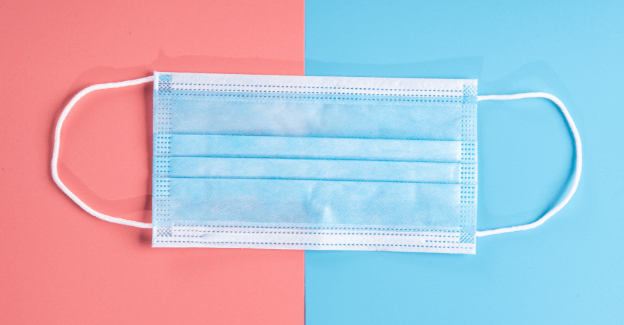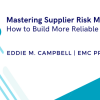Why the Just-in-Time Supply Chain Model is Failing
The shortage of personal protective equipment (PPE) is a direct result of one of the biggest supply chain management disruptions in recent history -- the COVID-19 pandemic. These shortages aren’t just bad news for hospitals and retailers, but can often mean the difference between life and death for healthcare workers and their patients.
Even before COVID-19, the business model of highly coordinated international supply networks has come under pressure. Increasingly-uncertain political environments and the looming effects of climate change have prompted concerns about the structure of global supply chains – and organizations’ ability to respond.
The just-in-time supply chain model, currently in use by many health systems is not only doing suppliers a disservice, but also costing organizations time, money and security at a time when those they take care of need it most. Instead of continuing to survive by the skin of their teeth, organizations would be well-served to pivot to a direct supply model that allows for more control to proactively manage the supplies they need and mitigate the impact of major supply chain disruptions.
Lack of Safety Stock? Lack of Preparedness
For example, when building a hospital, most healthcare systems originally plan for ample storage, but when it comes to finalizing the plans, they opt to maximize revenue and ensure quality patient care, so they end up substantially reducing the amount of space for supplies. Hospitals end up taking daily or weekly deliveries to keep storerooms stocked, rather than purchasing and getting deliveries in bulk.
So what happens when a global supply chain disruption occurs and those regular, small deliveries are all backordered? Medical professionals don’t have the supplies they need and patient care suffers. It sounds dire, but it’s the truth. Now more than ever, we’re seeing health systems that rely heavily on third parties, such as distributors and Group Purchasing Organizations (GPOs), detrimentally impacted by their inability to proactively plan ahead.
The pandemic has gained the attention of a lot of CEOs in healthcare who now realize how important the supply chain is to mitigate supply risk and not compromise patient care. While the COVID-19 pandemic is an extreme example of what happens when organizations do not self-distribute, we have seen other major disruptions caused by hurricanes that can wreak similar havoc.
Take Greater Control of Your Supply Chain
Most health systems now have the scale and volume to build out their own self-distribution model. It is no longer sufficient to rely on distributors in a just-in-time or even stockless manner for critical supplies. It is far better to develop relationships directly with manufacturers who can deliver bulk quantities of the supplies your organization needs at a much lower overall cost.
It’s the same model that makes other industries such as automotive, high tech and retail so effective. If you can purchase items in bulk, thus lowering the manufacturer’s or distributor’s delivery costs, the savings will result in increased cash retention.
There’s also an element of control that comes into play. When something unforeseen happens, organizations that have built this relationship with the manufacturers will have better insight into manufacturer inventory and will be able to speak to the manufacturer directly rather than go through a middleman. Manufacturers are likely to fulfill customer orders before distributor orders.
There is a direct correlation between the supply chain and an organization’s ability to care for its patients. While we all hope COVID-19 proves to be a black swan event, the pandemic has also highlighted the fact that our globalized world should prompt organizations to focus on building a direct supply model that equips them to work directly with manufacturers to secure products in bulk so they’re not caught off-guard during the next disaster.
Returning to the example of the healthcare industry, hospitals and clinics truly focused on the health and welfare of their patients now realize that the supply chain has to be at the core of their efforts. All the work these organizations do to deliver the best quality and outcomes for their patients means very little if they lack the supplies and equipment to provide that care due to easily avoidable supplier issues.
By being able to build a direct supply model that focuses on in-house distribution, health systems will be more agile and more equipped to survive the next supply chain disruption that comes their way while still serving patients with the level of excellence they deserve.









